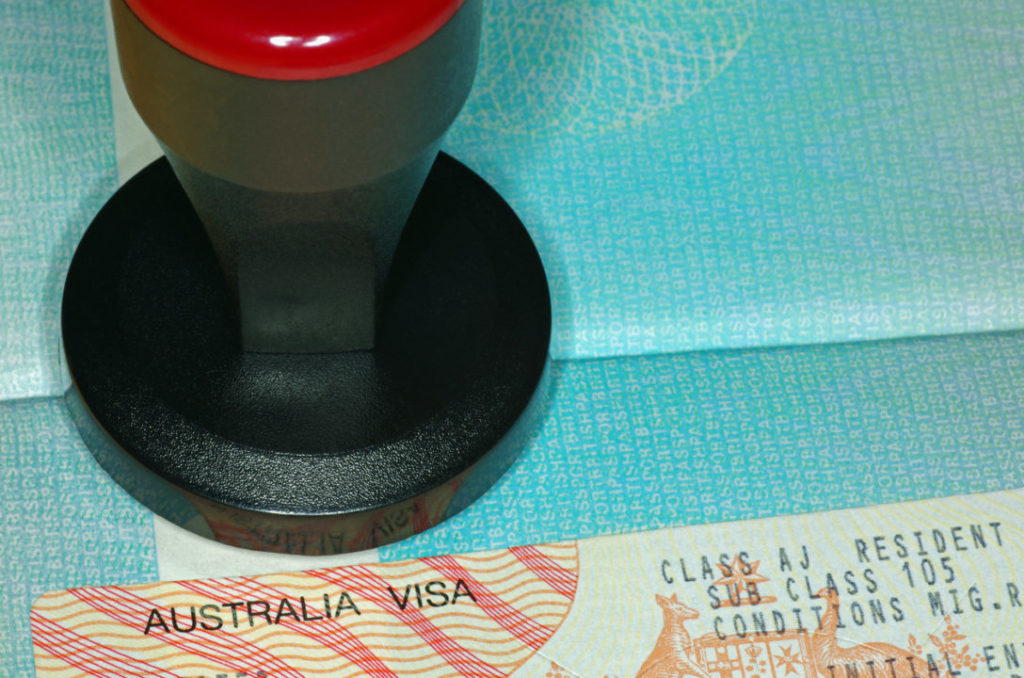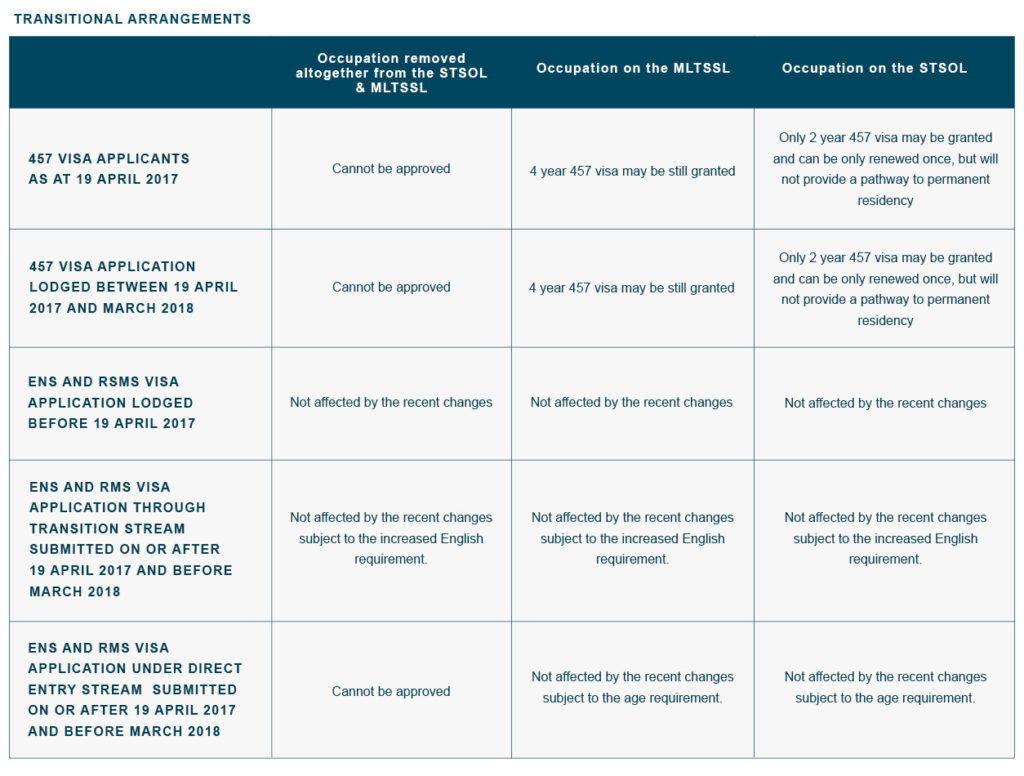
On 18 April 2017, the government announced rigorous changes to Australia’s Temporary and Permanent Employer Skilled Migration Work Visa Programmes. Besides some immediate changes, the 457 Visa will make a way for a completely new Temporary Skill Shortage visa in March 2018.
The 457 visa programme has been known to be one of the most popular ways to permanent residency and has helped many migrants successfully apply for permanent visas, as you can see in the statistics below.

Given the popular use of the 457 visa, it’s no surprise this news turned many lives upside down. This article tries to clarify the exact changes to ease the minds of everyone involved, whether you were planning to apply for the former 457 visa, or already hold one.
Changes to the 457 Visa Programme by date
From 19 April 2017
There will be fewer professions on the list of eligible skilled occupations. This list divides in two streams: the Short-term Skilled Occupations List (STSOL) and the Medium and Long-term Strategic Skills List (MLTSSL). This list will be reviewed every 6 months. Please visit the following link to this list and its new caveats: https://www.legislation.gov.au/Details/F2017L00450.
The STSOL is designed to meet Australia’s skills needs on a short-term basis. Which means that applicants whose profession fall under the STSOL, may be granted a 457 visa with a maximum duration of 2 years, which can be only renewed onshore once and has no pathway to permanent residency.
Occupations on the MLTSSL have a high value to the Australian economy, so applicants whose profession is mentioned on this list may be issued a 457 visa for a maximum duration of 4 years. This visa can be renewed onshore and holders of this visa can apply for permanent residency after 3 years.
From 1 July 2017
The language salary exemption threshold, which used to exempt applicants with a certain salary, will be removed. This means these applicants should also meet the minimum average IELTS score of 5, with a minimum of 4.5 in each test component for STSOL applicants and a minimum score of 5 in each test component for MLTSSL applicants.
Further requirements will be introduced in regards of training benchmarks and character test.
From 18 March 2018.
The 457 visa will now completely be replaced with the TSS, existing of the two previously specified streams: the Short-term Skilled Occupations List (STSOL) and the Medium and Long-term Strategic Skills List (MLTSSL). For regional Australia, additional occupations are available to support regional employers.
In addition to the previously highlighted changes, both streams’ applicants need to have at least two years experience in the particular occupation and meet the minimum market salary rate. STSOL applicants also require a Genuine Temporary Entrant – which is a statement that confirms the applicant’s intentions.
Employers are always required to do a non-discriminatory workforce test and Labour Market Testing to ensure no suitable qualified Australian citizen, permanent resident or ‘eligible temporary visa holder’ readily available for the position. They also will be required to pay a contribution to the Skilling Australians Fund.
Changes to the ENS and RSMS Visa Programme by date.
From 19 April 2017
In line with the changes to the 457 visa, there will be changes to the the list of eligible skilled occupations, which will be condensed and reviewed every 6 months. The Consolidated Sponsored Occupation List (CSOL) will be renamed the Short-term Skilled Occupations List (STSOL), while the Skilled Occupations List (SOL) will now be named the Medium and Long-term Strategic Skills List (MLTSSL).
From 1 July 2017
The required minimum score of 5 in each component of an International English Language Testing System (IELTS) or equivalent test, will be raised to a minimum score of 6.
Additionally, the current maximum age for the direct entry pathway will be lowered from 50 years to 45 years at the time of application.
From March 2018
Only the professions on the MLTSSL or added occupations in Australia’s regional areas are eligible for this permanent employer sponsored skilled visa programme.
When holders of this ENS or RSMS visa came through the temporary residence transition stream, they will only be able to apply for permanent residency after three years, instead of the previous minimum of two years. However, the direct entry stream is still available.
Apart from the previously mentioned changes, the applicant requires a minimum of three years experience, relevant to the particular occupation. Plus, the employer must meet the Australian market salary rate and also pay a contribution to the Skilling Australians Fund.
Structure of changes

Please contact our immigration expert, Andrew Woo for further advice on how you would be affected by the above changes. You are welcome to contact Andrew by completing the enquiry form on this page and emailing Andrew at info@tayscott.com.au.
At Taylor and Scott, “We Care For You”.



